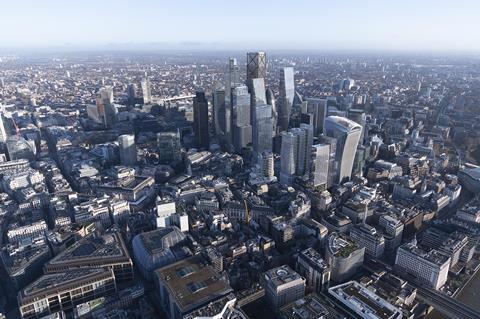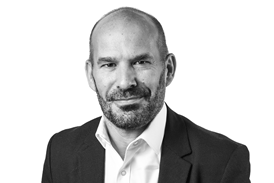Study finds 2,000ha of previously-developed land within walking distance of the capital’s town centres
The capital has enough well-located brownfield sites to build nearly half a million new homes within walking distance of existing town centres, according a new report..
���dz�’s&�Բ�����;London 2070: Our vision for the future city region report says local high streets and town centres will be “key” to rebuilding the capital’s economy in a “more balanced and resilient way” after the coronavirus pandemic.

But the consulting giant says a greater emphasis needs to be placed on the re-use of brownfield land and underused town-centre buildings to deliver new homes in sustainable locations that have multiple transport options for residents. It says no new homes should be built in areas that lack local facilities or access to sustainable modes of transport.
Aecom says town centres need to reinvent themselves and move away from the “retail dominant” model of the past 40 years as new ways of working and living become more prevalent. The report says a renaissance of local high streets and town centres with integrated urban transport at their hearts would help valuable land resources regain their role as important employment, social, entertainment and civic centres.
Aecom says the 2,000ha of brownfield land it has identified as ripe for housing development in the capital are no more than 1.5km from town centres with good transport links and that those sites should be a focus for “compact growth”.
Andrew Jones, who is director of Aecom’s city programme, said a re-use of brownfield sites close to existing transport options and social infrastructure would help support the swift delivery of new homes and support a renaissance of town centres.
“Our research shows there is the potential for nearly half a million new homes on brownfield land close to existing hubs in the capital,” he said.
“For the long-term success of London, this strategic urban growth must happen in parallel with a longer-term focus on reimagining local town centres and high streets.

“Enabled, in part, by changes in the way we are choosing to live and work that have been accelerated by the pandemic, there is a real opportunity for town centres to return to their traditional role as civic destinations. Forward-looking authorities will work hand-in-hand with retail investors to set new visions for their centres with smaller, contiguous shopping cores that are distinctive, attractive and viable for the future.”
The report also identifies a need for a more joined-up approach to guide “successful, resilient growth and infrastructure investment” that looks beyond London’s current administrative boundaries to a city region including everywhere within 60 minutes’ travel of central London.
It calls for a new approach to guide growth beyond the boundaries of the city, linking transport and infrastructure investment, community development and economic strategy to understand how investment can benefit the broader “London City Region” and the UK more widely.
Jones said the lack of an overarching spatial planning framework for London and the South East had made region-wide issues with long term consequences impossible to address in recent years.
“The challenges of redefining the London City Region post-pandemic and proactively addressing climate change are not being looked at holistically,” he said. “As the mayor and government plan the priorities to support the capital’s recovery from the pandemic, there needs to be a coordinated plan.
“We need to make bold moves that focus on compact growth in the city and embrace the interconnected future of the wider metropolitan region.”
also calls for a fundamental change to community development and placemaking across London and its commuter belt, with boroughs working more closely with their neighbours in the wider metropolitan region to better align infrastructure investment with planned housing and economic growth.
Additionally, Aecom is calling for a strategic review of the role of the Metropolitan Green Belt and how it should evolve over the next 50 years. The report says that without a reassessment of designations around the capital, the green belt will “remain undervalued and poorly used” and cause urban growth patterns that create unsustainable communities, threaten good quality agricultural land and encourage more long-distance commuting.



























No comments yet